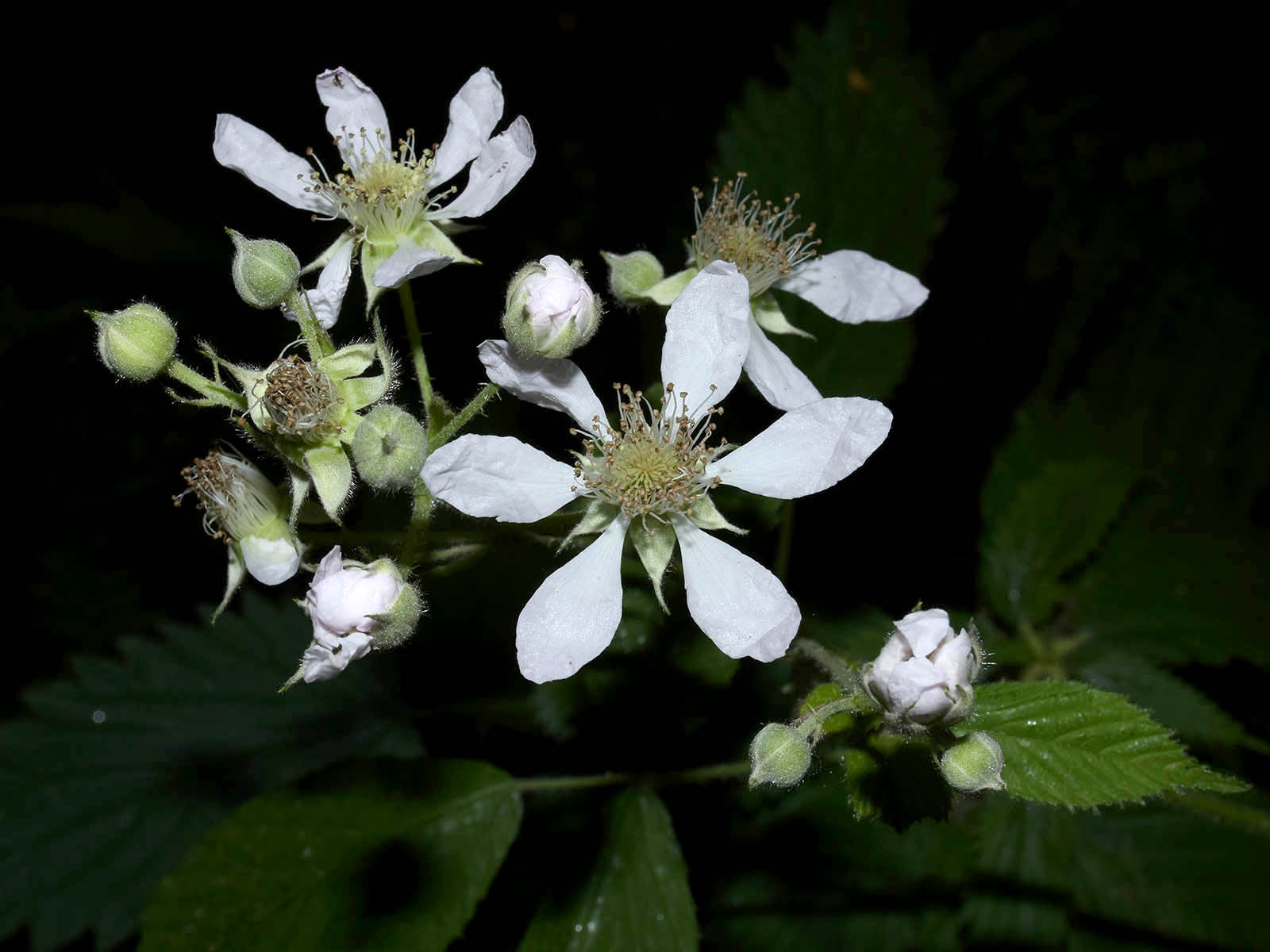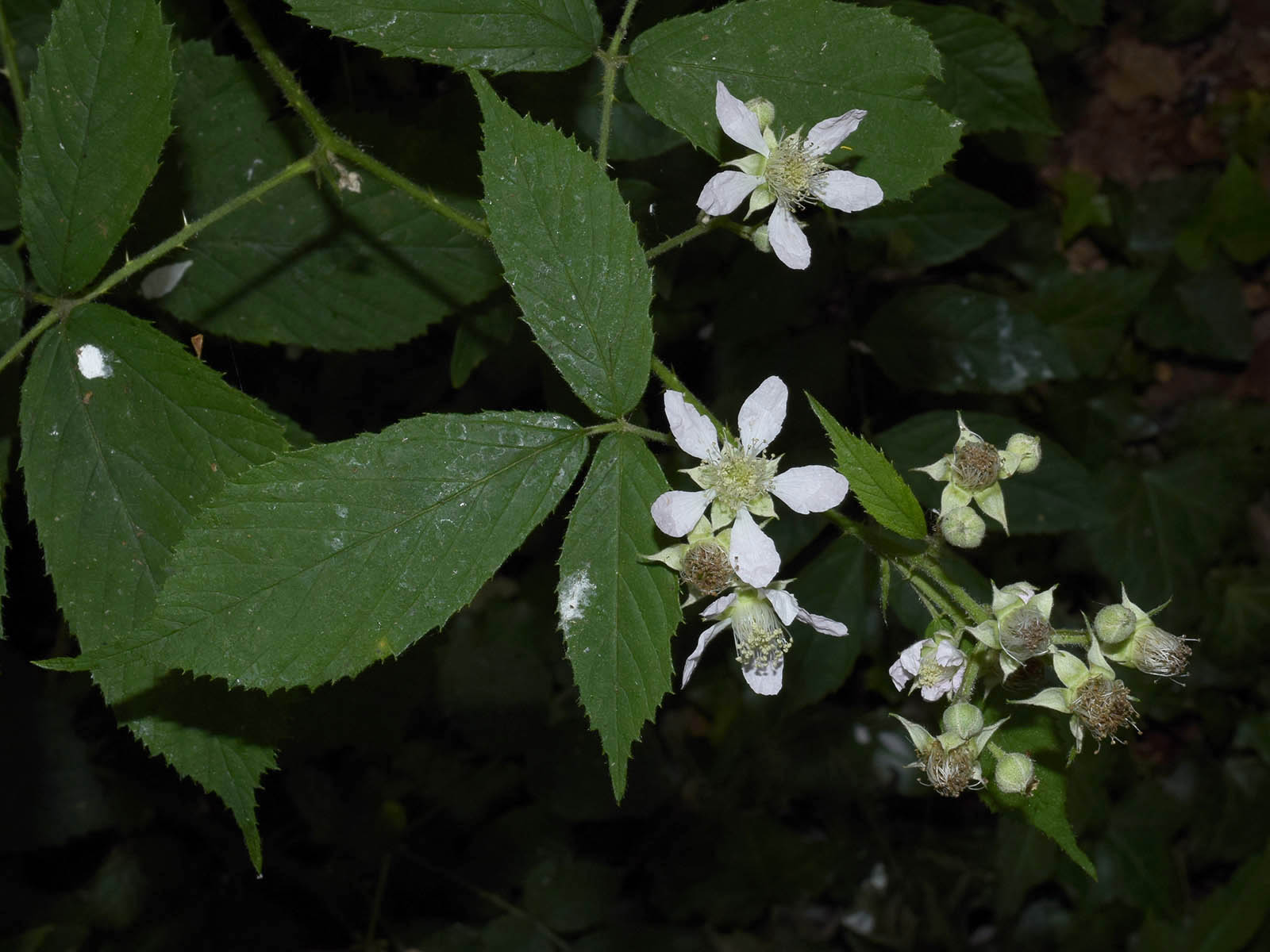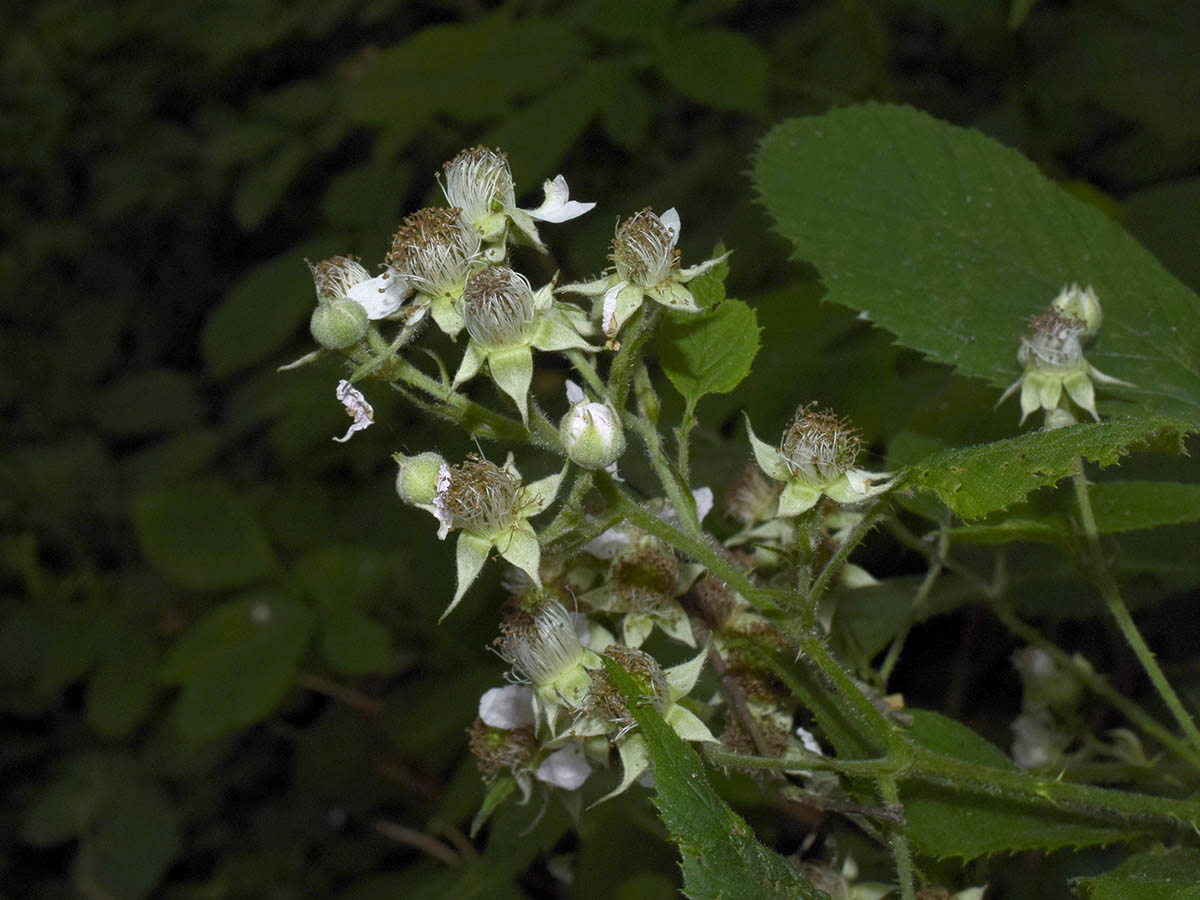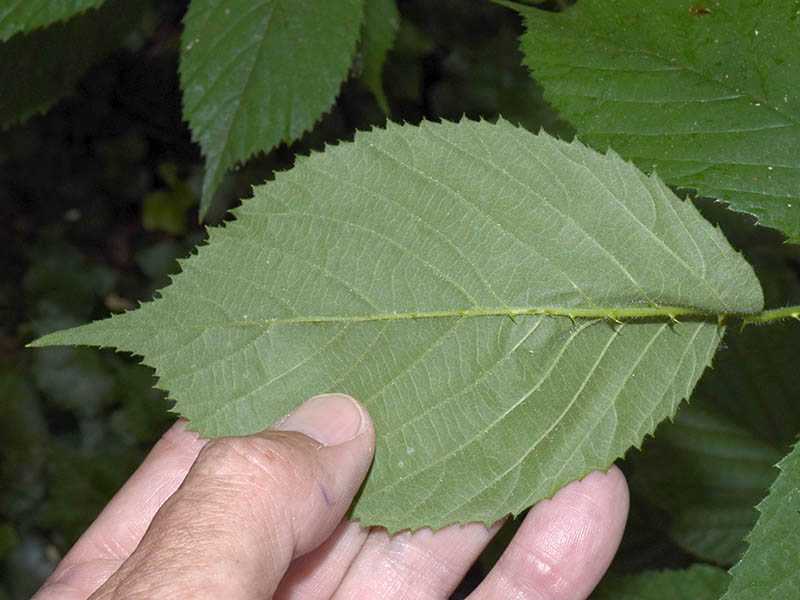
Rubus anglobelgicus – Series Anisacanthi
back to Alphabetical index · Taxonomic index
Rubus anglobelgicus was described by David Allen in Watsonia Vol. 22 (1998) after he realised that a bramble sent to him from Belgium matched one that he had recorded from southern Hampshire. Although he has since had second thoughts as to whether they are indeed identical, the bramble itself is very distinctive due to its large obovate terminal leaflets and pale pink elliptical petals. In Hampshire it is mainly restricted to just two 10km squares in the area around Fareham and Gosport where it is predominantly a species of shady woodland.

The panicle is long and moderately flexuose with several 3-foliate leaves and often one or two single narrow leaflets subtending a rather flat-topped clustered head of flowers. There may be some long ascending side branches each with a few flowers. The upper part of the rachis and the pedicels are pubescent and usually have at least a few short-stalked glands but can be moderately glandular. Sessile glands are also frequent on the panicle. The floral branches also have some fine declining or curved prickles and occasional pricklets. The leaflets in the panicle are similar to those on the stem in being narrowly obovate with an entire or emarginate base and a long acuminate apex. They are slightly greyish-felted beneath.


Flowers are relatively large, 3cm diameter or more, with pale pink (often fading to white) elliptical to obovate petals, 15-17 x 7-10mm (sometimes smaller). Stamens are much longer than the styles. Anthers are usually glabrous. Styles are pale yellow or greenish and usually pinkish at the base. Carpels are densely hairy; the receptacle may have a few hairs. Sepals are variously orientated - either reflexed or patent - during early flowering and fruiting; they are long and finely pointed with numerous short-stalked glands, mainly on the margins.



The terminal leaflets are thin (when shade grown), large, averaging 10-12 x 6-7cm but sometimes slightly smaller or larger, emarginate to entire or rounded at the base with a long, narrow acuminate apex (2cm), which is often curved to one side. The leaf margin is sharply dentate to serrate, with fairly even toothing and undulate on open-grown leaves (2nd photo below). The underside is pale below or thinly greyish felted.




The first-year stem is yellow-green to reddish purple in colour, usually sharply angled wih furrowed or sometimes flattish sides, robust and high-arching. Prickles are broad-based, declining and confined to the angles; about as long as the width of the stem or slightly shorter. Sparse, short hairs are present, mostly on shaded stems; stalked glands are generally rare and difficult to find; acicles and pricklets occur in variable quantity and hence the taxon was placed in the Anisacanthi.

